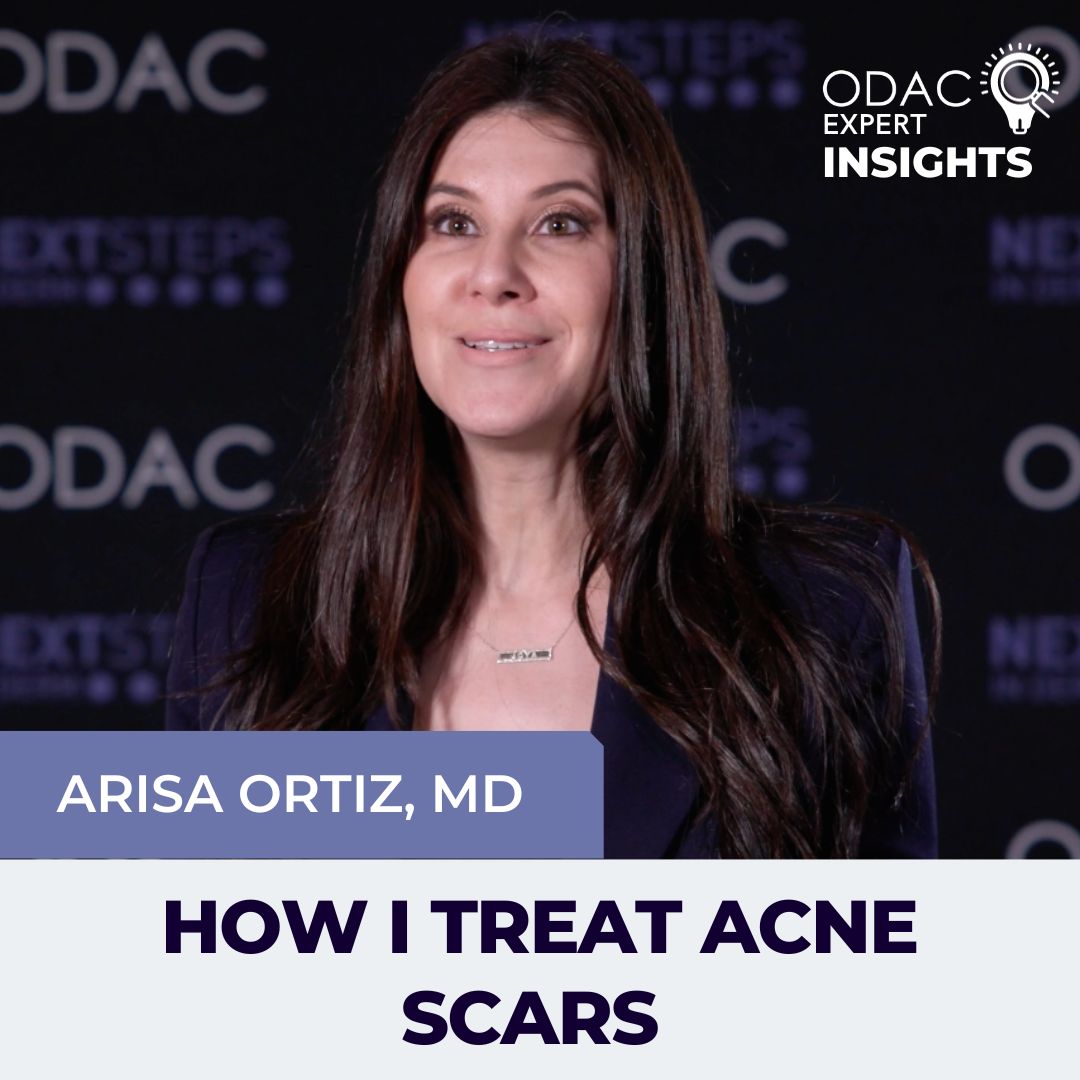Next Steps in Derm, in partnership with ODAC Dermatology, Aesthetic & Surgical Conference, interviewed Dr. Arisa Ortiz, director of laser and cosmetic dermatology at UC San Diego Health. Dr. Ortiz shares why it’s important to set realistic expectations with patients who are seeking treatment for their acne scars. Watch as she outlines her approach for each type of scar, and shares a simple tip when patients are seeking a quick fix. Plus find out a simple way to know if a scar is amenable to laser treatment.
Further Reading
If you want to read more about treating acne scars, check out the following articles published in the Journal of Drugs in Dermatology:
Treatment of Moderate to Severe Acne and Scars With a 650-Microsecond 1064-nm Laser and Isotretinoin
ABSTRACT
Background: Laser procedures for acne and acne scars have traditionally been postponed for at least 6 to 8 months after the end of systemic isotretinoin therapy. Lower dosages with more modern laser devices having unique energy parameters of high power in microsecond pulse durations have made it possible to administer laser therapy during or shortly after completion of isotretinoin therapy, thus reducing the risk of side effects of isotretinoin.
Methods: Patients with moderate to severe facial acne (n=46) and atrophic scars enrolled in a 6-month study. Genetic analysis of patients revealed the presence of polymorphisms of genes Col1A2, MMP3, ESR1, MMP1, and MMP7, which can lead to scar formation. Patients underwent low-dosage isotretinoin therapy (0.2-0.3 mg/kg/day) in combination with facial laser treatment using a 650-microsecond, 1064-nm Nd: YAG laser. Acne severity was graded using the Investigators Global Assessment (IGA) scale and quality of life was evaluated by the Dermatology Life Quality Index (DLQI).
Results: IGA parameters decreased from 1.8 ± 0.2 (mean ± SD) initially to 0.5 ± 0.4 at the end of the study, a 72.3% reduction which was significant (P<0.01). The DLQI index decreased from 10.1 ± 1.3 initially to 2.8 ± 1.2, a 72.3%, a significant reduction (P<0.01). Inflammatory elements resolved without scarring. Laser treatment was well tolerated and improvement in pre-existing scars was noticeable.
Conclusions: The 650-microsecond, 1064-nm laser in combination with low-dose isotretinoin is safe and effective in patients with acne complicated by atrophic scars and genetically prone to post-acne scarring.
Effective Treatment of Acne Scars Using Pneumatic Injection of Hyaluronic Acid
ABSTRACT
Acne scars remain a challenging condition to treat despite multiple currently available technologies. This study evaluated the clinical efficacy and safety of pneumatic injections of Hyaluronic Acid in the treatment of acne scars. Two patients (Fitzpatrick skin type IV-V) with acne scars received two sessions of pneumatic, needleless injections of crosslinked hyaluronic acid (HA) at 4-week intervals. The treatment response was assessed by comparing pre- and 3-month posttreatment clinical photography. The patients’ acne scar grade improved from 2 to 1 in the first case, and 3 to 2 in the second case, based on independent physician assessment. Patient degree of satisfaction was similar to the physicians’ assessment. No significant adverse events were noted. We conclude that pneumatic injection technology to deliver HA to the tissue is an effective and safe method for improving acne scars, even in patients with dark complexion.
Did you enjoy this video interview? Find more here.

